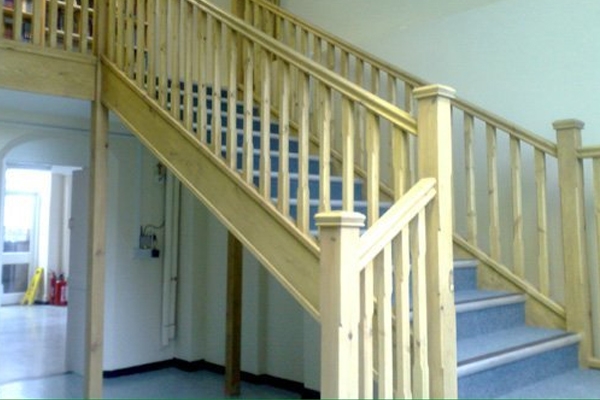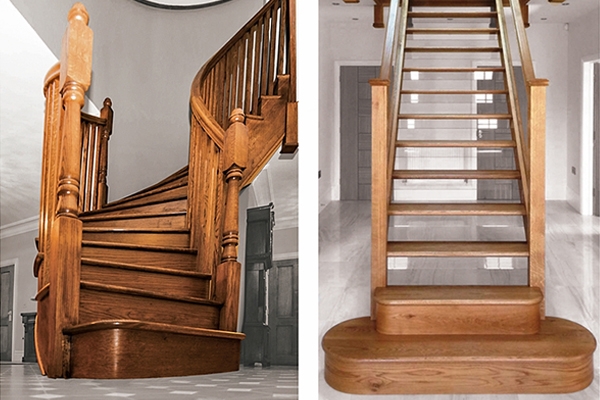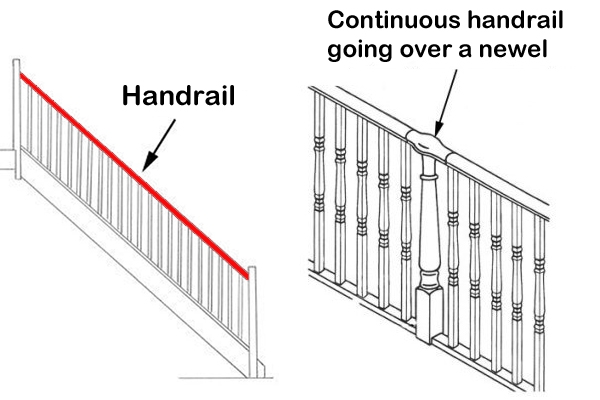Balustrading - Where to Begin
|
Balustrading is a vital part of any staircase. You may not have heard the term balustrade, but will have definitely seen, and probably used, one along stairs and landings everywhere, they are also often referred to as bannisters, railings or handrails. |
||||||
 |
||||||
|
You may not have paid much attention to your balustrades but in fact, some elements of it are required by law to ensure you meet current Building Regulations and maintain safety. |
||||||
 |
If your staircase is less than one metre wide, official building regulations state that it must be fitted with at least one handrail. If it’s more than a metre wide, it needs one on each side. The handrail - also often referred to as the bannister - is only one part of the set of fittings that make up a balustrade, of course. |
|||||
|
Find out more about the other individual parts, and about the options, you have to choose from when looking into balustrading for your own staircase, by reading on. This useful guide has been produced by Pear Stairs, specialists in staircase design, manufacturing and fitting for over a century. |
 |
|||||
What Makes Up a Balustrade? |
||||||
 |
“Balustrade” is actually a rather broader term than many people realise. Unlike the common misconception, it doesn’t simply refer to the railing that runs along one side above the steps - this is actually called the “handrail”, or sometimes, the “bannister”, and forms only one part of the balustrading. |
|||||
|
Other balustrading components include: The base rail - the base rail is something of a counterpart to the handrail. Running vertically below it, it usually measures around the same length. It supports the parts of the balustrading above it, and joins them to the “string” (the string is a plank or narrow sheet - usually made of wood - that runs up the angle of the stairs on either side). |
 |
|||||
 |
Newels - also known as “newel posts”, these are large vertical posts which are most commonly fitted at the top and foot of the balustrading, and sometimes at a turn in the stairs. Newel posts provide structural support to the balustrade and handrail and are usually finished off with a plain or decorative newel cap. |
|||||
|
The infill - this fills the gap between the handrail and base rail, serving a decorative purpose, but also helping to keep the flight of stairs safe and secure; without it, there would be a much higher chance of something, or someone, falling through that gap, plus it often helps to support and add stability and strength to the handrail. It is usually referring to the parts used between the handrail and baserail that complete the look of a balustrade. |
 |
|||||
 |
It can be made up of spindles, a series of shaped vertical poles which run up the rake of the stairs and across any landing, atop the base rail. Spindles are the most commonly used decorative element of a balustrade and are available in a huge variety of materials, shapes and styles. If using spindles you will often also need Infill Fillets that fit on top of the base rail to separate and create space between the bottoms of each spindle foot and to provide a cap for the groove each spindle is fitted into. |
|||||
|
We have a large selection of traditional and modern styles of spindles and many of our customers choose to have customer spindles to suit their exact design requirements. There are other options available instead of spindles, such as sheets of toughened glass that are commonly used on modern styles of stairs to produce a baluster that encourages natural light to flow, making them ideal for darker spaces. |
 |
|||||
Choosing Your Balustrading |
||||||
 |
The fantastic thing here is the sheer variety of design opportunities and combinations available to you when deciding on the look of your new balustrade. To start with, the style of your components is completely up to you. From chic, contemporary minimalism to classical, rustic decor and everything in-between, the balustrade is usually the facet that best dictates the particular style you wish to opt for. Elaborately carved wooden stair spindles tend to complement a more traditional type of staircase, though simpler, sharper versions made from timber can offer a much more modern look. |
|||||
|
For something bold and contrasting, metal spindles are popular and can be shaped into all kinds of beautiful flourishes or set in a sleek, shiny row to add subtle, clean lines. You can even opt for a stylish combination of metal and wood spindles. If you’re not a spindle person, you can fit toughened glass as infill too. This can be as transparent or opaque as you wish, and you can even have it painted to add a splash of colour. You can also add specially selected end caps, brackets and newel caps to complete your design. |
 |
|||||



